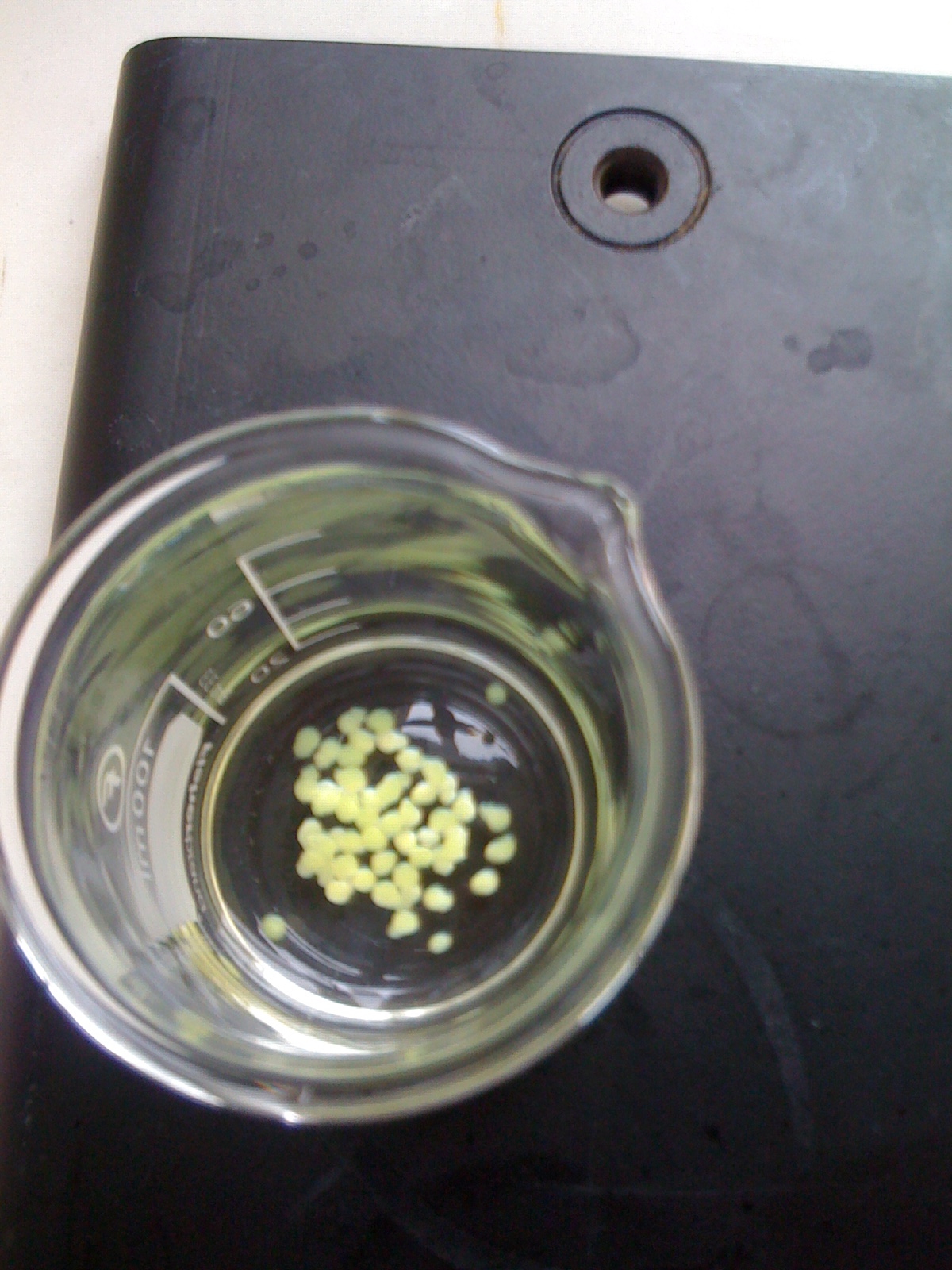Team:BCCS-Bristol/Wetlab/making beads
From 2010.igem.org
| Line 2: | Line 2: | ||
<center> • [[:Team:BCCS-Bristol/Wetlab/Beads|Overview]] • [[:Team:BCCS-Bristol/Wetlab/Beads/Gellan |Bead Materials]] • [[:Team:BCCS-Bristol/Wetlab/making_beads|Making Beads]] | <center> • [[:Team:BCCS-Bristol/Wetlab/Beads|Overview]] • [[:Team:BCCS-Bristol/Wetlab/Beads/Gellan |Bead Materials]] • [[:Team:BCCS-Bristol/Wetlab/making_beads|Making Beads]] | ||
• [[:Team:BCCS-Bristol/Wetlab/difference_solution|Beads in Solution]] • [[:Team:BCCS-Bristol/Wetlab/difference_soil|Beads in Soil]] • [[:Team:BCCS-Bristol/Wetlab/Beads/ImageGallery|Image Gallery]] • </center> | • [[:Team:BCCS-Bristol/Wetlab/difference_solution|Beads in Solution]] • [[:Team:BCCS-Bristol/Wetlab/difference_soil|Beads in Soil]] • [[:Team:BCCS-Bristol/Wetlab/Beads/ImageGallery|Image Gallery]] • </center> | ||
| + | |||
=Making Beads= | =Making Beads= | ||
| Line 10: | Line 11: | ||
For more detail into how the beads work, gellan gum and other methods we tried, go to the bead page | For more detail into how the beads work, gellan gum and other methods we tried, go to the bead page | ||
| - | |||
==Bead Making Procedure== | ==Bead Making Procedure== | ||
| - | |||
[[Image:Picture 009.jpg|thumbnail|right|250px]] | [[Image:Picture 009.jpg|thumbnail|right|250px]] | ||
It is first necessary to set up a 50mL LB overnight inoculated with a colony of cells you wish to encapsulate, and leave this overnight at 37°C. The next day, follow these steps: | It is first necessary to set up a 50mL LB overnight inoculated with a colony of cells you wish to encapsulate, and leave this overnight at 37°C. The next day, follow these steps: | ||
| - | |||
# Add 0.24g of Gellan Gum to 19.6mL of ddH2O. Heat in a waterbath to 90°C, stirring occasionally, then cool to 54°C. | # Add 0.24g of Gellan Gum to 19.6mL of ddH2O. Heat in a waterbath to 90°C, stirring occasionally, then cool to 54°C. | ||
Latest revision as of 19:02, 27 October 2010
iGEM 2010
Making Beads
Motivation
To improve signal detection we decided to encapsulate our bacteria inside beads made of gellan gum and set about developing our own procedure. Research yielded a number possible options and having experimented with several, we eventually settled modifying a technique developed by Carol Nolan (Nolan, Carol L. (Blue Bell, PA). 1992. Method for microbial immobilization by entrapment in gellan gum. United States Monsanto Company (St. Louis, MO). http://www.freepatentsonline.com/5093253.html)
For more detail into how the beads work, gellan gum and other methods we tried, go to the bead page
Bead Making Procedure
It is first necessary to set up a 50mL LB overnight inoculated with a colony of cells you wish to encapsulate, and leave this overnight at 37°C. The next day, follow these steps:
- Add 0.24g of Gellan Gum to 19.6mL of ddH2O. Heat in a waterbath to 90°C, stirring occasionally, then cool to 54°C.
- Meanwhile centrifuge 2 x 25mL overnight at 4500 x g for 8 minutes. Discard the supernatant.
- Wash the pellet in 2mL of ddH2O, re-suspend and centrifuge at 4500 x g for 5 minutes. Repeat once.
- Slurry the cells in 0.25mL ddH2O and add to the cooled gum, mix gently by shaking.
- Pipette dropwise into 0.5mL of CaCl2 using the p1000 pipette from approximately 1.5 inches above the surface solution.
- Gently agitate the beads for at least 1 minute then pour off the CaCl2.
This will result in beads approximately 1 - 2mm in diameter.
Note: It is essential to pipette the beads into CaCl2 as soon as possible once the bacteria have been added to the gellan gum. The cooler the gum-bacteria mix gets, the larger and less uniform the beads formed will be.
 "
"
